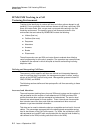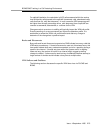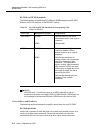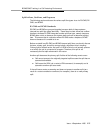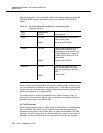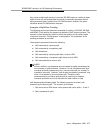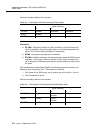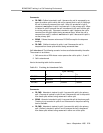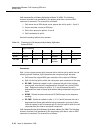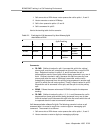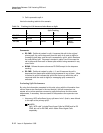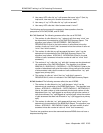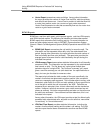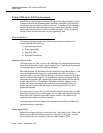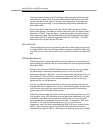
Interactions Between Call Vectoring/EAS and
BCMS/CMS
F-10 Issue 4 September 1995
Call Answered by a Primary Split after a Route To VDN. The following
scenario involves a call answered by the primary split after a
route-to VDN
command is executed. The scenario is as follows:
1. Call comes into a VDN whose vector queues the call to splits 1, 2 and 3.
2. Vector executes a
route-to VDN
step.
3. Call is then queued to splits 4, 5 and 6.
4. Call is answered in split 4.
Here’s the tracking table for this scenario:
Comments:
Split 1 is the
original
primary split, because this is the first split to which the call
actually queues. However, split 4 becomes the
new
primary split because:
■ Call leaves the
original
VDN upon execution of the
route-to VDN
step.
■ Split 4 is the first split to which the call queues upon execution of this step.
■ R3 CMS:
Outflow
is tracked in split 1 because this split is the
original
primary split, and the call is dequeued from this split via a
route-to VDN
step.
Dequeue
is tracked in splits 2, 3, 5, and 6 because the call is
dequeued from each of these splits without being answered in any one of
them.
■ BCMS: Follows the same scheme as R3 CMS except for the
dequeue
tracking.
■ R2 CMS:
Outflow
is tracked in splits 1, 2, 3, 5 and 6 because the call is
dequeued from these splits without being answered in any one of them.
Inflow
is tracked in split 4 because split 4 is the first split to which the call
requeues after the
route to
command is executed.
Call Answered by the Non-Primary Split after a Route To VDN. The following
scenario involves a call answered by the nonprimary split after a
route to VDN
command is executed. The scenario is as follows:
Table F-6. Tracking for Call Answered by Primary Split after
Route to VDN
Split Tracking
123456
R3 CMS outflow dequeue dequeue answer dequeue dequeue
BCMS outflow answer
R2 CMS outflow outflow outflow inflow
answer
outflow outflow



